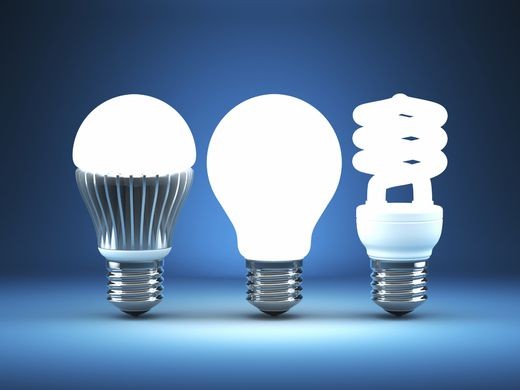Replacement of incandescent bulbs with compact fluorescent lights in Ghana
By setting regulatory requirements, Ghana was able to successfully phase out inefficient incandescent bulbs, saving 6% of the country’s energy demand. A widespread transition to the responsible purchasing of better Compact Fluorescent Lights was achieved through regulation and standards, complemented by other measures including providing incentives to consumers, and certifying and labelling bulbs.

The challenge:
Around the turn of the century, Ghana was suffering from frequent power outages. To combat this the Ghanaian government sought out cost-effective measures to cut the domestic peak load. This way they could address the growing social unrest caused by the outages, as well as potentially making economic and environmental gains.
The measure:
The Government of Ghana first tasked its Energy Commission with researching the state-of-play in terms of how electricity was being used in the country. Their research showed that, in 2000, around two thirds of the residential electricity load was being used for lighting. The most commonly used light-bulbs were incandescent bulbs which were extremely inefficient, with a short lifespan.
A national programme, incorporating a number of complementary measures, was implemented, aiming to replace the inefficient incandescent bulbs with better performing compact fluorescent lights (CFLs).
The first measure undertaken by the government was to purchase 6 million CFLs. These lamps were then given to households in exchange for incandescent bulbs. Following this the government began supporting private demand, introducing a tax instrument to remove all duties levied on CFLs, making the lamps more widely affordable.
Legislative changes were made in order to incentivise the uptake of CFLs. A law was put in place for a wholesale ban on the manufacture, importation and sale of incandescent lamps. This was backed up by inspections at customs offices and bulb manufacturers and retailers. Those who violated this prohibition faced fines and the possibility of a prison sentence.
To protect consumers against fake, sub-standard and unreliable CFLs, which subsequently found their way onto the Ghanaian market, the Energy Foundation, the Energy Commission and the Ghana Standard Board also introduced a Performance Standard. Under the standard, CFLs should have a minimum service life of 6,000 hours and should also have a minimum efficacy of 33 lumens per watt. This information must be displayed on all products via an Energy Guide label.
At the same time the Energy Foundation, a non-profit, private sector institution, spearheaded extensive public education campaigns, raising consumer awareness on the benefits of using CFLs and the disadvantages of incandescent lamps.
The actions had a transformational effect on lighting in Ghana. In its first three years of implementation the measures cut the use of incandescent lamps from 58% to 3% in 2009, while the penetration of CFLs increased from 20% to 79% in the same period.
The total energy saved as a result of the shift to energy-efficient lighting is equivalent to about 6 per cent of the total national electricity demand and 30 per cent of electricity used for lighting. Financial savings were placed at around US$ 45 million annually, which represents a payback period of four months for the programme.
The programme required collaboration between a number of actors, both in the public and private sector, including: the Government Energy Commission, the Electricity Company of Ghana, the Association of Ghana Industries, Northern Electricity Distribution Company, the Ghana Association of Electrical Contractors and the Public Utility Regulatory Commission.
Lessons learnt:
The measure shows the value of evidence-based policy making. Extensive preparatory research made a clear case for a ban on incandescent bulbs and a move to CFLs. As such a measure was identified as a win-win for most of society (less so for makers of incandescent bulbs), implementation was much smoother and in the end the policy was a success.
Then implementing a number of complementary measures – legislative, fiscal, public relations - was certainly also an important success factor.
Objections to the replacement of incandescent lamps for general lighting mainly include the higher purchasing cost of alternative light bulbs. By first offering free bulbs, and then removing all duties and taxes on CFLs, the Ghanaian Government overcame this initial barrier. As households begin to save on their energy bills, the initial opposition to higher upfront costs anyway diminishes.
Further deployment:
The phase out of incandescent lighting has already happened across much of the world, but Ghana sets a good example for many countries yet to make the transition. This practice is estimated to be at GML 9.
Links:
http://www.greengrowthknowledge.org/sites/default/files/downloads/resource/Inclusive_Green_Growth_in_Ghana_UNECA.pdf
http://www.energycom.gov.gh/
http://www.energycom.gov.gh/efficiency/standards-and-labelling
